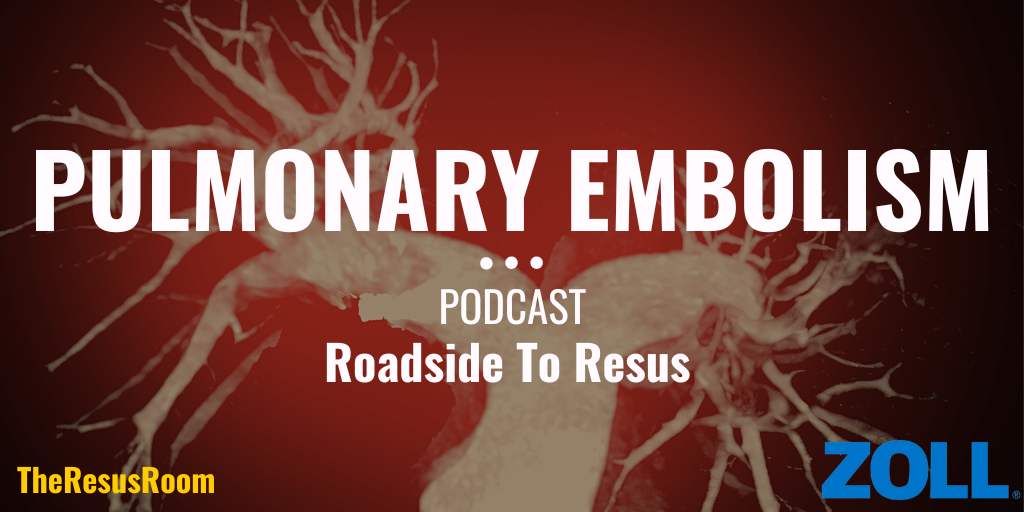PE’s (or Pulmonary Emboli) are a key part of Emergency Care, something that many of us will consider as a differential diagnosis multiple times of a daily basis, in a similar way to acute coronary syndrome, so we need to be absolute experts on the topic!
A PE normally occurs when a Deep Vein Thrombosis shoots off to the pulmonary arterial tree, occurring in 60-120 per 100,000 of the population per year
The inhospital mortality is 14% and the 90 day mortality is around 20%. But this is proportional to its size, and risk stratifying PE’s once we’ve got the diagnosis is really important.
PE is a real diagnostic challenge and less than 1 in 10 who are investigated for a PE end up with the diagnosis, so knowing the risk factors, associated features and thresholds for work up are really important.
There are some key concepts in risk stratification and particularly in test thresholds that we’ll cover in this episode that are applicable to all of our practice…..we’re excited! Getting these right helps us to avoid missing the diagnosis and equally importantly ensure we aren’t ‘over testing’ & ‘over diagnosing’ because investigation and treatment for a PE isn’t without it’s own risks.
In the episode we’ll talk in depth about factors associated with presentation, risk factors, investigations and finally onto treatments, covering the whole spectrum from low risk PE’s up to those with massive PE’s and cardiac arrest. The evidence base behind the work up and treatments is truly fascinating and we hope you find this episode as eye-opening as we did to prepare for!
Once again we’d love to hear any thoughts or feedback either on the website or via X @TheResusRoom!
Simon, Rob & James
Now that you have listened to the podcast, start the quiz to add it to your CPD Diary
References
NICE CKS Summary; Pulmonary Embolism. 2022
Multidetector Computed Tomography for Acute Pulmonary Embolism. Stein. NEJM. 2006
Lung Ventilation Perfusion Scan (VQ Scan). Mirza. StatsPearls. 2023
Fibrinolysis for patients with intermediate-risk pulmonary embolism. Meyer. NEJM. 2014
Perinatal Mortality Surveillance: UK perinatal deaths of babies born in 2021. MBRRACE-UK
Thrombolytic therapy for pulmonary embolism. Cochrane Review 2021
Acute Pulmonary Embolism. Vyas. StatPearls. 2024
Classification and Stratification of Pulmonary Embolisms. Int J Angiol. 2022
2019 Guidelines on Acute Pulmonary Embolism (Diagnosis and Management of). ESC. 2019
Pulmonary Embolism; Radiopedia
Pulmonary embolism: update on management and controversies. Duffett. BMJ. 2020
PERC Rule for Pulmonary Embolism; MD Calc
Guidelines For The Initial Outpatient Management of Pulmonary Embolism; BTS 2018


